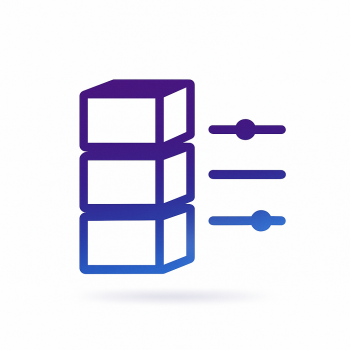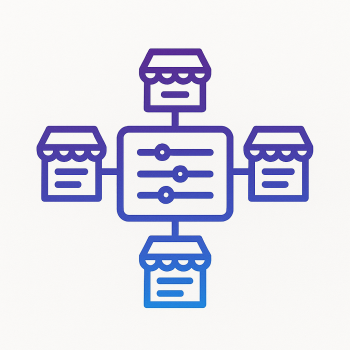How to Leverage Magento 2’s Event-Driven Architecture for Custom Workflows

Understanding Magento 2’s Event-Driven Architecture
Magento 2 is built around an event-driven architecture, which means it relies heavily on events and observers to trigger actions. This setup allows developers to extend or modify the platform’s behavior without touching core files—keeping your customizations safe during updates.
Think of it like a well-organized party. When something happens (an event), like a guest arriving (a customer placing an order), Magento broadcasts it. Then, any observer (your custom code) listening for that event can react accordingly—maybe sending a confirmation email or updating inventory.
Why Use Events & Observers?
Here’s why leveraging events is a game-changer:
- Non-invasive: No need to override core files.
- Flexible: Easily add or remove functionality.
- Maintainable: Updates won’t break your custom logic.
- Scalable: Perfect for complex workflows.
Key Components of Event-Driven Architecture
Before diving in, let’s clarify a few terms:
- Events: Triggers (e.g.,
checkout_onepage_controller_success_action). - Observers: Listeners that execute code when an event fires.
- Plugins (Interceptors): Modify method behavior before/after execution.
Step-by-Step: Creating a Custom Observer
Let’s say you want to log every new customer registration. Here’s how:
1. Define the Event in events.xml
First, declare which event you’re hooking into. Create or modify:
<?xml version="1.0"?>
<config xmlns:xsi="http://www.w3.org/2001/XMLSchema-instance" xsi:noNamespaceSchemaLocation="urn:magento:framework:Event/etc/events.xsd">
<event name="customer_register_success">
<observer name="magefine_customer_registration_logger" instance="Magefine\CustomerLogger\Observer\LogNewCustomer"/>
</event>
</config>Save this in app/code/Magefine/CustomerLogger/etc/frontend/events.xml.
2. Create the Observer Class
Next, build the observer logic:
<?php
namespace Magefine\CustomerLogger\Observer;
use Magento\Framework\Event\Observer;
use Magento\Framework\Event\ObserverInterface;
use Psr\Log\LoggerInterface;
class LogNewCustomer implements ObserverInterface
{
protected $logger;
public function __construct(LoggerInterface $logger)
{
$this->logger = $logger;
}
public function execute(Observer $observer)
{
$customer = $observer->getEvent()->getCustomer();
$this->logger->info("New customer registered: " . $customer->getEmail());
}
}Save this in app/code/Magefine/CustomerLogger/Observer/LogNewCustomer.php.
3. Test It Out
Register a new customer, then check var/log/system.log. You’ll see your log entry!
Advanced Use Case: Custom Order Processing Workflow
Let’s level up. Suppose you want to:
- Check inventory when an order is placed.
- Notify a third-party ERP if stock is low.
1. Hook Into sales_order_place_after
Create app/code/Magefine/OrderWorkflow/etc/events.xml:
<?xml version="1.0"?>
<config xmlns:xsi="http://www.w3.org/2001/XMLSchema-instance" xsi:noNamespaceSchemaLocation="urn:magento:framework:Event/etc/events.xsd">
<event name="sales_order_place_after">
<observer name="magefine_order_inventory_check" instance="Magefine\OrderWorkflow\Observer\CheckInventory"/>
</event>
</config>2. Build the Inventory Checker
<?php
namespace Magefine\OrderWorkflow\Observer;
use Magento\Framework\Event\Observer;
use Magento\Framework\Event\ObserverInterface;
use Magento\CatalogInventory\Api\StockRegistryInterface;
use Magefine\OrderWorkflow\Api\ErpServiceInterface;
class CheckInventory implements ObserverInterface
{
protected $stockRegistry;
protected $erpService;
public function __construct(
StockRegistryInterface $stockRegistry,
ErpServiceInterface $erpService
) {
$this->stockRegistry = $stockRegistry;
$this->erpService = $erpService;
}
public function execute(Observer $observer)
{
$order = $observer->getEvent()->getOrder();
foreach ($order->getAllItems() as $item) {
$stockItem = $this->stockRegistry->getStockItem($item->getProductId());
if ($stockItem->getQty() < 10) { // Threshold
$this->erpService->notifyLowStock($item->getSku(), $stockItem->getQty());
}
}
}
}Pro Tips for Event-Driven Development
- Use Dependency Injection: Always inject dependencies via constructors.
- Avoid Heavy Logic in Observers: Delegate complex tasks to service classes.
- Know Your Events: Check Magento’s core event list.
- Debugging: Temporarily log event data to understand payloads.
When to Use Plugins Instead
While events are great for reacting to actions, use plugins when you need to:
- Modify method input/output (before/after plugins).
- Replace method behavior entirely (around plugins).
Example: Changing product prices before display:
<?xml version="1.0"?>
<config xmlns:xsi="http://www.w3.org/2001/XMLSchema-instance" xsi:noNamespaceSchemaLocation="urn:magento:framework:ObjectManager/etc/config.xsd">
<type name="Magento\Catalog\Model\Product">
<plugin name="magefine_price_adjuster" type="Magefine\PriceAdjuster\Plugin\ProductPricePlugin"/>
</type>
</config>Final Thoughts
Magento 2’s event-driven architecture is your best friend for building scalable, maintainable customizations. Whether you’re logging data, integrating APIs, or creating complex workflows, events keep your code clean and upgrade-safe.
Ready to supercharge your Magento store? Start by identifying repetitive tasks in your workflow that could be automated via events!
Got questions or cool event-based solutions? Drop them in the comments below!





